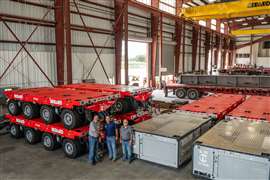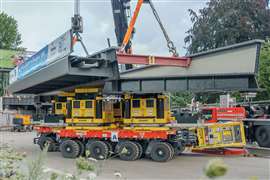Russian crane market grows more sophisticated
24 September 2021
Import replacement on the Russian market has stalled, and an unstable demand has driven some of the Russian major crane producers to financial problems. However, some segments of the domestic market still have bright prospects. Vlad Vorotnikov reports for ICST.
Since beginning exchanging sanctions with Western countries in 2014, the Russian government has been calling domestic construction equipment companies to replace imported equipment on the national market, referring that a strong dependence in this field one day could be deadly for the domestic building industry.
Deadly dependence
This import replacement, however, is not likely to happen any time soon. In 2018, Rzhevskij Crane Plant, one of the pillars of the Russian crane industry, went bankrupt.
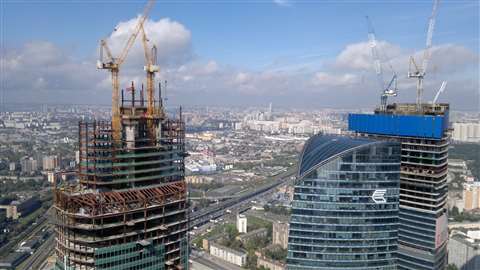 Russia’s crane market was oversupplied for several years
Russia’s crane market was oversupplied for several years
Its product range was primarily tower cranes and loader cranes. The company experienced severe financial problems for several years, reportedly delaying payments to its suppliers and salaries to its employees.
As explained by Vasily Shevchenko, Rzhevskij plant’s bankruptcy supervisor, at the time of bankruptcy, the company accumulated a debt of 303 million rubles (US$4 million). Shevchenko cited lack of orders and consequently a poor capacity utilisation factor as the main reasons for the financial troubles. Hopes for a soon revival of the company with a new investor were not destined to come true. To date, the plant remains out of operation.
For nearly a decade, Rzhevskij Crane Plant was one of the three biggest Russian crane producers, alongside Nyazepetrovsk Crane Plant and Strommashina. These three plants together produced around 200 cranes per year. They were the last splinters of the powerful Soviet industry, which consisted of several dozen plants at peak supplying customers across the Socialist block with roughly 4,000 cranes per year.
A few years before the bankruptcy, Roman Radivilov, deputy general director of the Rzhevskij plant, laid out plans to boost the production performance fourfold to 100 cranes per year. At that time, the Rzhevskij plant operated seemingly better than its local competitors. Nyazepetrovsk Crane Plant, for instance, had to fight for survival, as at some point, its production slumped to miserable eight cranes per year.
Industrial security
Around that time, the Russian Industry and Trade Ministry listed some cranes among the industrial products, on which import-replacement must be pushed forward.
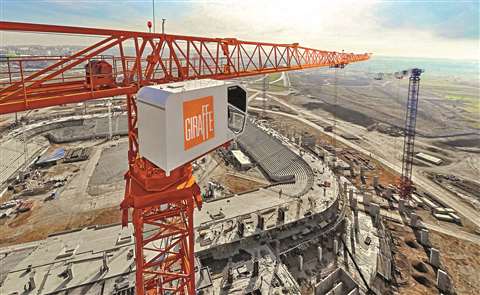 The Russian government tried to push import replacement on the cranes market
The Russian government tried to push import replacement on the cranes market
Speaking during a government meeting a few years ago, former Russian Prime Minister Dmitry Medvedev estimated that up to 80 per cent of machines and equipment in the Russian building industry was imported, which jeopardised the country’s “industrial security” in the context of the geopolitical tension with Western countries.
In this background, the authorities rolled out plans to achieve import replacement on the domestic market, beginning with the segment of tower cranes with carrying capacity between 12 and 16 tonnes. Russian construction companies, however, questioned the very idea of switching to domestic equipment.
“The foreign equipment is more convenient, as foreign cranes have a larger boom, they are assembled faster. In addition, Russian equipment is very heavy,” commented Petr Kapralov, general director of the Russian construction company, Citystroy, adding that at the time of the Rzhevskij plant’s bankruptcy, Russia was overstocked with cranes.
“They [customers] imported so many cranes to Russia so that only half of them actually were operating,” Kapralov said.
Crane oversupply
The oversupply problem has been hampering sales on the Russian crane market for several years. In 2020, 45 pillar cranes were sold in Russia, almost twice the previous year’s level, the Russian state statistical service Rosstat estimated. This is significantly lower compared to the level seen in the early 2010s.
The call for import replacement has become a warning sign for the Russian building companies, who feared that the government would decide to beat this goal by restricting import.
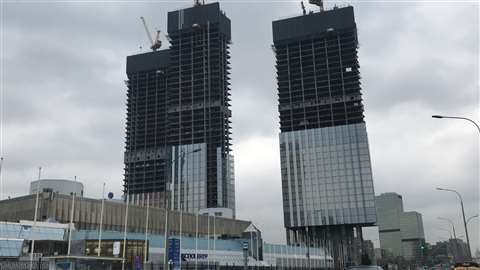 Moscow remains the biggest market for construction cranes
Moscow remains the biggest market for construction cranes
“Now, thanks to Russian counter-sanctions [food embargo introduced by the Russian government in 2014], consumers began buying more domestic cheese, but its quality, alas, has not improved. Instead, imports of palm oil have risen sharply, which is used to produce some dubious surrogates,” said Nikolay Sobolev, executive director of the National Association of Manufacturers of Building Materials, Products and Structures, speaking about the possible restriction on imported construction equipment.
However, so far, the import-replacement campaign has not gone beyond the scarce statements of particular government officials. Russian building companies remain confident that it will stay that way since the restrictions would be too painful for the national economy.
Truck cranes enjoy growing popularity
While the overall sales of cranes in Russia were weak during the past few years, some segments experienced higher demand than others. As explained by Alexander Kharisov, director of the Russian architecture company ASK Unit, the demand on the Russian market has been swinging towards truck cranes in the past few years.
“The use of such machines paves the way to mount structures in large blocks weighing 1,300 to 1,500 tons, which increases labor productivity tremendously,” Kharisov said, adding that quite a few new players emerged in this segment in the past few years.
“A number of Russian and foreign companies are currently engaged in the production of truck cranes. Key foreign suppliers are Tadano, Link-Belt, Kato, Liebherr, Grove, Terex, Zoomlion, and XCMG,” he added.
Cranes of Russian origin dominate in the small and medium capacity segment, while the heavyweight segment is controlled primarily by foreign suppliers. Currently, the leaders are the Chinese companies XCMG, Zoomlion, Sany, and Liebherr.
“Among Russian companies, truck cranes with a lifting capacity of 60 and 80 tonnes are produced only by JSC Avtokran from Ivanovo and GAKZ, and truck cranes with a lifting capacity of 70 tonnes are produced only by GAKZ,” Kharisov said.
Chinese inflow
The past few years have been marked by a strong inflow of Chinese cranes on the Russian market. However, unlike many other industry segments, Russian companies producing truck cranes manage to hold their ground.
“In recent years, the Russian truck crane industry has made a significant leap forward in its technological development due to the changed requirements and construction trend. The development of multi-axle chassis has enabled our manufacturers to supply competitive products that satisfy their consumers,” Kharisov added.
Another type of lifting construction equipment in high demand in Russia these days is all-terrain truck cranes, which is believed to be associated with expanding construction works in Siberia and the Far East, poorly populated regions, with harsh operational conditions.
“The record holder in this segment belongs to Liebherr LTM 11200-9 crane with a 100 metre boom, the lifting capacity of which reaches 1,200 tonnes. Among the models of Russian origin, the first place belongs to GAKZ, and its KS-74713 machine capable of handling an 80 tonne cargo,” Kharisov said.
Lockdown not restricting
The Covid-19 pandemic has not brought any negative impact on the Russian crane market, market participants said.
Even during the lockdown period introduced in the first half of 2020, most machine-building companies in Russia have been granted a status of essential businesses, which allowed them to continue their operation as usual.
“The quarantine restrictions embarked on by the Russian government to slow down the spread of the coronavirus appeared to be rather soft. In fact, the pandemic has even spurred the demand for real estate in Russia as a safe harbor for investments. This is likely to support the demand for cranes in the country in the coming years,” commented a source at the Russian crane manufacturer who wished not to be named.
Port cranes require modernisation
In the coming years, Russian companies also anticipate strong demand for port cranes, where most equipment is outdated and needs to be replaced.
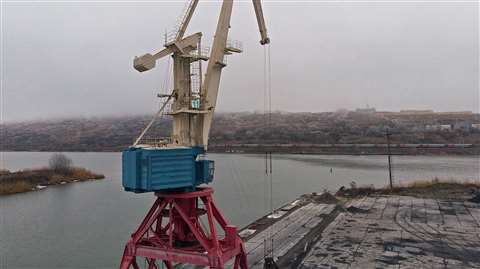 Most port cranes in Russia are outdated
Most port cranes in Russia are outdated
The Russian Industry and Trade Ministry set the target to cut down the country’s dependence on the port and off-shore cranes from 100 per cent in 2014 to 47 per cent and 60 per cent in 2020, respectively. It is yet to be seen whether those targets were beaten, but the Russian companies producing port cranes reported strong sales in the past few years.
“Almost all ports in the country are now striving to upgrade their equipment. The infrastructure is indeed morally and physically outdated,” commented Eduard Aivasyan, sales director of the Russian port crane producer SMM.
SMM is the largest player in the Russian port cranes market, alongside ZPMC and another Russian company Technoros.
According to Aivasyan, since the Russian government revealed its plans to replace imports in some domestic port equipment industry segments, SMM supplied 80 cranes to the Russian seaports.
“Judging from their operational experience, they only match the best foreign products but, in many cases, even surpass them in terms of operational parameters,” Aivasyan added.
The Russian port cranes market offers promising opportunities to foreign companies too.
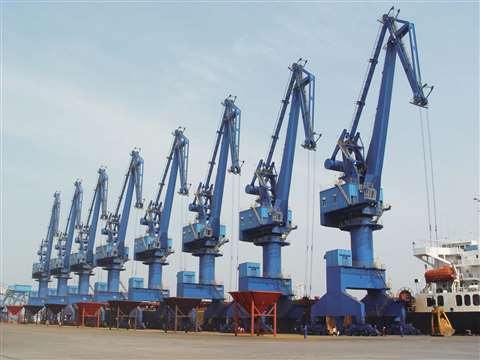 ZPMC is the biggest market player in the port cranes segment
ZPMC is the biggest market player in the port cranes segment
“If we talk about Russia, we could mention a delivery in 2019 of a large batch of ZPMC port equipment consisting of three STS cranes, four RTG cranes, and four reachstackers at NUTEP LLC, as well as the conclusion in 2020 of a new contract with this company for the supply of five RTG cranes and seven reachstackers,” said Denis Stupak, deputy general director of ZPMC Russia.
The real need for new port cranes in Russia, however, is believed to be way above the current demand. A couple of years ago, the Russian Industry and Trade Ministry estimated that 90 per cent of port cranes in Russia were old and needed to be replaced.
“Taking into account the huge number of port cranes that are currently operating in the Russian sea and river ports, the country’s production capabilities do not allow any significant change in statistics in such a short time. Many ports, especially river ports, do not have the financial resources to purchase new portal cranes, even Russian-made, not to mention foreign equipment,” Stupak said.
Future seaports
Besides, not only existing ports will need new cranes in Russia. The government has embarked on the Northern Sea Route project – an ambitious plan to establish a new sea route through the Arctic ice, which is likely to become an alternative to Suez Canal in the foreseeable future. To make this route operational, Russia will need to build several new seaports in the Arctic.
STAY CONNECTED


Receive the information you need when you need it through our world-leading magazines, newsletters and daily briefings.
CONNECT WITH THE TEAM










